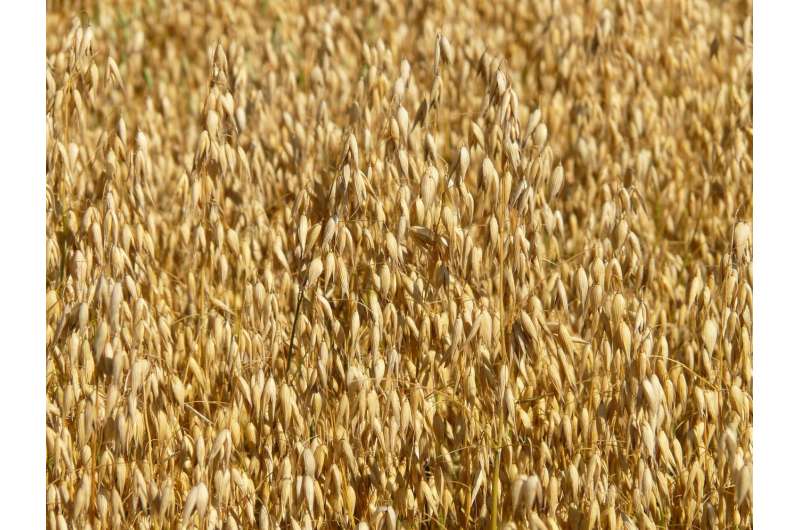From food to textile鈥攁gricultural waste could become the clothes of the future

Sadie Harley
scientific editor

Robert Egan
associate editor

Cellulose-based textile material can make the clothing sector more sustainable. Currently, cellulose-based textiles are mainly made from wood, but a study headed by researchers from Chalmers University of Technology points to the possibility of using agricultural waste from wheat and oat.
The method is easier and requires fewer chemicals than manufacturing forest-based cellulose, and can enhance the value of waste products from agriculture.
Making clothing from water-intensive cotton has a major impact on the climate. That's why cellulose from other raw materials has come into focus in recent years as a more resource-smart method of textile production.
Up to now, efforts have concentrated on wood-based cellulose. But in a published in RSC Sustainability, researchers investigated a different path for cellulose fiber manufacture, by using waste products from agriculture, which Sweden has a lot of.
The researchers tested oat husks, wheat straw, potato pulp and sugar beet pulp. Oat husks and wheat straw turned out to work best to develop a pulp, called dissolving pulp, which is used to make clothing.
"With this method, which we further developed in this study, we show that you can make textile pulp from certain agricultural waste products," says Diana Bernin, Assistant Professor at the Department of Chemistry and Chemical Engineering at Chalmers and senior researcher in the study.
"This is an important step towards being able to create textiles from waste products instead of using cotton, which isn't climate-friendly, or wood, a material that we want to use for so many things while also needing to preserve it for the benefit of the climate."
More sustainable manufacturing with lye
The team used soda pulping as one part of the process. This means that the raw material is boiled in lye, which makes manufacturing more sustainable.
"Lye doesn't contain any toxins or substances that impact nature," she explains. "Soda pulping doesn't work for wood fibers, so making textile pulp from wheat straw and oat husks requires fewer chemicals than making forest-based cellulose. It's also a simpler procedure, in part because it doesn't require processing such as chipping and debarking.
"In addition, it increases the economic value of oats and wheat, when leftovers from their production can be used as raw materials for cellulose extraction."
Bernin says it is likely that several other agricultural waste products can be used for textile manufacture using the method her team developed. She is currently involved in an international project that has found, using the method in this study, that press-cake from grass from fields works very well to create dissolving pulp.
In continued studies that have yet to be published, the researchers have also taken another step towards practical application of the dissolving pulps, creating textile fibers based on pulp from wheat and the press-cake from grass.
Hope of using existing industries
In the long run, she sees good opportunities to use the pulp-and-paper industry, which already has technology and processes in place, to dissolve pulp from agricultural waste.
"If we can make use of our existing industry and adjust their processes instead of building new production facilities, we've already come a long way," she says.
The lead author of the study is Joanna Wojtasz, former postdoc at Chalmers and now a researcher at the innovation company Tree To Textile, which is one of the partners in the project.
"The study shows that there is a lot of potential in agricultural waste," Wojtasz says. "We really shouldn't disregard the opportunity to use this type of cellulose streams for our future clothing."
More information: Joanna Wojtasz et al, Producing dissolving pulp from agricultural waste, RSC Sustainability (2025).
Journal information: RSC Sustainability
Provided by Chalmers University of Technology



















